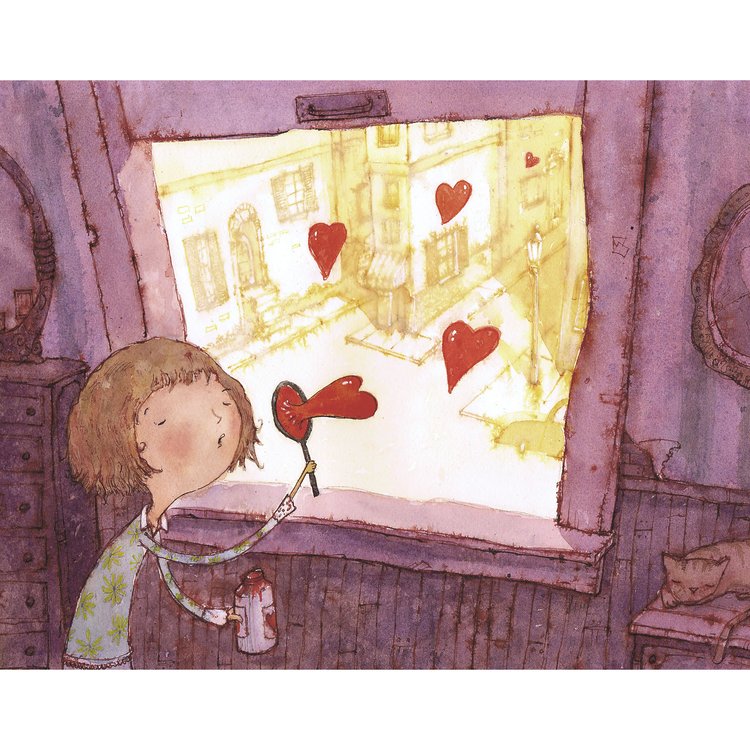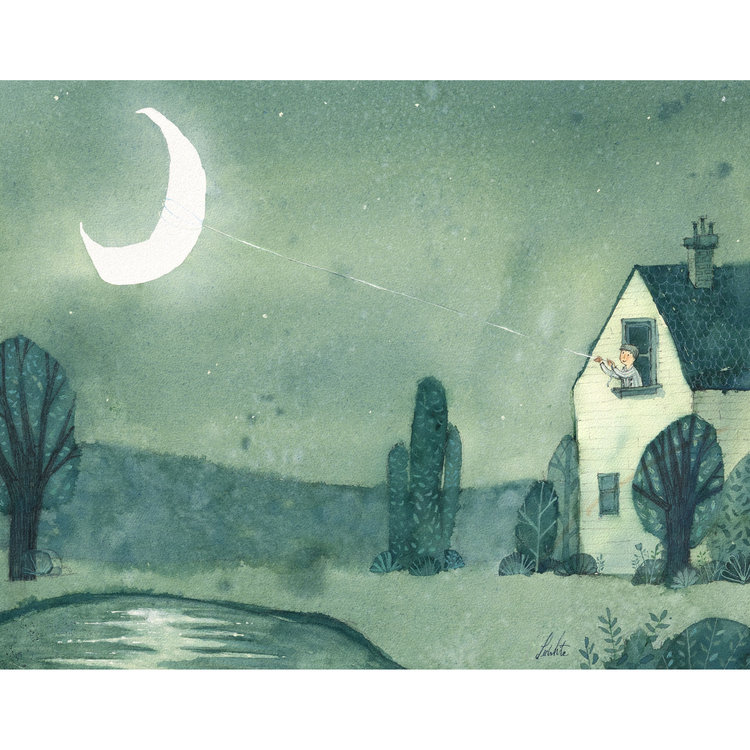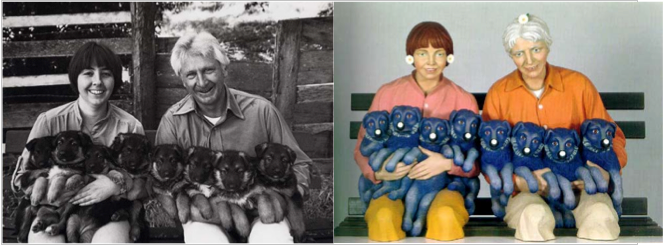Question about draw this in your style challenges
-
@Lee-White The first scene is a frog dancing with a bird watching in a bright and happy vibe. The second has the bird directing a begging frog to a fiery death in an ominous dark forest. Can you explain what you mean by the same nature and what they are doing? Because that seems entirely different to me.
There have to be lines, but if the line is "don't draw anything remotely similar to another thing," we're boned as artists. Just as an example, and not trying to call you out, but take this drawing by you:

Now, google 'girl blowing heart bubbles'. Are you all violating the copyright of the first person to do this? There are dozens of versions of the exact same action. In my eyes, these are all different enough, but they seem more similar in action and nature than my example.
What about this one?

This scene happened in Bruce Almighty (Which took the concept from It's a Wonderful Life, which took it from ???, etc.) And again, if you google it there are piles of similar results.
Let me reiterate that I'm not trying to call you out, or saying those are infringement. I would love clarity on what separates one from the other. You seemed very sure, and it doesn't seem that clear to me.
-
@Lee-White Awww yeah! This kind of thing is like copyright catnip for me! Because I look at this and think -- wow, I don't know! This is not cut and dry.
Okay, so to start there's no specific litmus test for a copyright infringement. It requires the consideration of multiple factors.
The case that Lee mentioned is Art Rodgers vs Jeff Koons

This involved taking a 2D photo and turning it into a 3D sculpture (complete with process notes given to the company tasked with actually making the sculpture from Koons that effectively said "Make it look more like the photo") Courts found that making a 2D image 3D was an infringement.In this case there's no question you are pulling from a single image. Which would tend to count against you in a copyright infringement question.
BUT you are clearly not directly copying the image.
New camera angle, lighting, redesigning characters so they have volume. New pose for bird and frog.
Also the Moose looks decidedly scary with the glowing red eyes.
The feeling I get from the original is "happy and friendly", the new one "threatening and unnerving". This latter goes toward the concept of "transformative use".If I had to make a definitive call on this from a legal standpoint, I would say this is not an infringement. From a personal standpoint, I would be cautious. It would not surprise me to get a cease and desist from the original artist, so I'd want to have my arguments lined up for the reply. And one of those arguments would be to get an opinion from a licensed intellectual property attorney.
-
@JerrySketchyArt I understand that there are some differences in your image and the other one, and I think @davidhohn is right (i don't say that very often). It probably does fall in the greyer area if a lawsuit was involved. But i would be reluctant to sell it. I guess I would say that as you start getting more specific, the danger starts to increase. The two images I painted probably have 100 versions of them. The overall content isn't that specific because I'm using very general icons. Hearts being blown is fairly generic and there are many instances of it i'm guessing. And the idea that a kid lassos the moon is pretty broad too. I'm sure there are probably a bunch of versions of similar themes online (i haven't looked, but I'd bet on it). They are using very general things and using them in fairly general ways. In other words, it would be pretty easy to argue that someone could realistically come up with that on their own without seeing someone else's version of it.
But as you start to get more specific, then the danger starts to come into play. In your example, You have three very specific animals together that do not get grouped often. Them being in a scene together is EXTREMELY specific. And both a basically shown in the same scale to each other and the same crop to each other. So now we are in a territory that (in my opinion) puts you in danger.
I see that their poses are different, etc., but here's the test. How logical or believable would it be to say that you came up with those characters like that without seeing the source image first? So that is why it is more derivative in my opinion.
-
@davidhohn That photo conversion is a straight up rip off! They definitely deserved to lose that case.
@Lee-White Thanks for clarifying! There are so many factors to judge. I don't envy copyright court judges. Just to mention it again - I'm not actually looking to sell this one. I posted it specifically because it seemed close, but not over, the line to me.
To add to the confusion on this topic - these artists are directly inviting people to draw their works. I wonder how that would affect a decision if it went to court? I would imagine that would weigh against the original poster.
-
@JerrySketchyArt The DTIYS aspect is intriguing!
I do wonder if posting an invitation/challenge like that is like putting the work into some version of the public domain? I don't know.. .I mean, to invite someone to create a derivative of your work, but not explicitly grant them ability to distribute and/or profit from it?Edit: Continuing to give this some thought -- I don't agree with my initial question/conclusion about a DTIYS challenge being equivalent to placing your work in the public domain. The only way to lose control of your copyright is to do so explicitly in writing. Without that copyright law automatically assumes ownership remains with the creator. That's a good thing and one that I wouldn't want illustrators to lose.
With that in mind I want to agree with @NessIllustration 's post above
I think it is only okay if the original artist is okay with it. So the answer should ALWAYS be to just simply ask.
Definitely -- be safe and respectful of other illustrators. Ask. Get permission to sell DTIYS images.
Really interesting question! One that I would want to take to an IP attorney! There may be other legal factors at play here that I'm not considering.
-
@Lee-White @JerrySketchyArt I think it's really illuminating that Lee and I are coming down on different sides of the copyright question on this. Because it highlights an aspect of copyright infringement -- it is a subjective call.
Taken to court (or arbitration or whatever), one judge can find that there's no infringement while another can find that there is.
-
@Lee-White wrote:
I see that their poses are different, etc., but here's the test. How logical or believable would it be to say that you came up with those characters like that without seeing the source image first? So that is why it is more derivative in my opinion.
You make a really good point.
The question of (in this case) @JerrySketchyArt coming up with that character grouping (Moose, frog, bluejay)based on the original artist's work is without question. The new image is absolutely a derivative of the original. That quality is built in to a DTIYS right?-- Man, this one makes my brain hurt --
I gotta say, I usually feel pretty confident about copyright questions but this is genuinely confusing for me. Mostly because of a clearly single and specific image as inspiration, no clear application of the Fair Use Defense, yet application of techniques that typically move a piece away from infringement.
-
@davidhohn said in Question about draw this in your style challenges:
Mostly because of a clearly single and specific image as inspiration, no clear application of the Fair Use Defense, yet application of techniques that typically move a piece away from infringement.
Fun head scratcher! Glad I made the post. Would the mood board from the original file make things even more complicated? While the initial spark was certainly from the DTIYS post, it was in no way inspired solely by the original. That could only create a loose copy at best.
Can we say for sure the DTIYS aspect does not make it open to use? That doesn't need to mean public domain. You can own a copyright and have others make money off of it, even if you don't. As a programmer who makes MIT licensed software this is a regular occurrence. Granted, I'm explicitly allowing the use, and requiring credit - but my copyright is maintained while others are free to expand/modify the code and profit.
-
Thanks for weighing in @Lee-White (delayed response due to having a fan girl moment for 3 weeks while I wiggled about my loungroom going ‘be cool Brooke, be cool’).
-
Thanks for all the very interesting posts and views on this. I realised something in the conversation about the legality of this situation between @Lee-White, @JerrySketchyArt and @davidhohn.
As a non professional artist, I think about the image as an image alone, based on some form of inspiration or not, because I’m just drawing for the challenge and as Lee said, the experience. I have only participated in one DTIYS and all the other work I create is my own original content, and I don’t do anything with it after I’ve created it, (meaning I don’t sell it - yet ). Because of this I think I haven’t ever been in a situation where I have needed to consider the circumstances from an IP perspective. That’s the key that was missing for my morale compass I think. It’s odd that I didn’t realise that because I’m also a writer and the IP and plagiarism factor is always very firmly in mind when I’m writing and I’m so paranoid about the possibility of having my ideas stolen that I will never discuss them with people in public.
). Because of this I think I haven’t ever been in a situation where I have needed to consider the circumstances from an IP perspective. That’s the key that was missing for my morale compass I think. It’s odd that I didn’t realise that because I’m also a writer and the IP and plagiarism factor is always very firmly in mind when I’m writing and I’m so paranoid about the possibility of having my ideas stolen that I will never discuss them with people in public.
(Sidebar-this isn’t arrogance because I think I’m the next Neil Gaiman or something, it’s just that these days, everyone is a writer with the ability to publish their work, and ears are everywhereeeeeeee, so it’s a matter of caution.)
The point that was being made about blowing kisses and lassoing the moon, falls under the umbrella in the written world as “general knowledge” I think. You can use general knowledge ‘ideas’ in your writing, things like Shakespeare was the worlds best writer, or Australia has many dangerous animals, or the sky is blue, etc, fact or opinion I think but not sure on that one, without having to reference the idea because it’s generally known. I think that is kind of the same idea that @Lee-White was getting at.
Anyway, this has been a very interesting discussion and I’m really grateful for all the views and thoughts you have all shared.